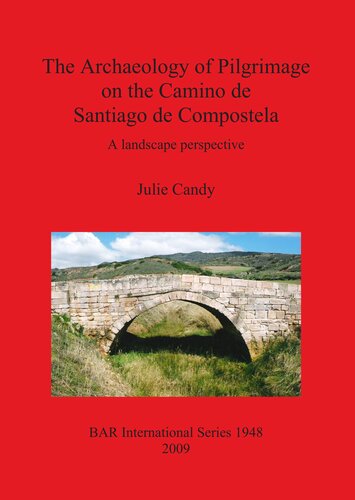

Most ebook files are in PDF format, so you can easily read them using various software such as Foxit Reader or directly on the Google Chrome browser.
Some ebook files are released by publishers in other formats such as .awz, .mobi, .epub, .fb2, etc. You may need to install specific software to read these formats on mobile/PC, such as Calibre.
Please read the tutorial at this link: https://ebookbell.com/faq
We offer FREE conversion to the popular formats you request; however, this may take some time. Therefore, right after payment, please email us, and we will try to provide the service as quickly as possible.
For some exceptional file formats or broken links (if any), please refrain from opening any disputes. Instead, email us first, and we will try to assist within a maximum of 6 hours.
EbookBell Team

4.8
84 reviewsTheoretical perspectives on landscape and bodily engagement with place inform an approach to the medieval pilgrimage to Santiago de Compostela. Focused primarily, but not exclusively, on the central Middle Ages, this research confronts two core questions: How did transient, mobile groups perceive and experience the diverse terrain of the pilgrim route in northern Spain? And how may their ephemeral presence be traced in the archaeological record? This study is underpinned by the conviction that the journey of medieval pilgrims, as opposed to their destination, deserves greater scrutiny. Pilgrimage is envisaged as a sequence of movement through landscapes, in which both built "sites" and unaltered aspects of the physical environment, such as rivers, mountains and arid plains, are integral to the experience and meaning of devotional travel. Three topographically distinct 'study areas' along the length of the Camino de Santiago in Navarre, Burgos and Galicia form the basis for the analysis of localised sets of material culture. Within these areas, historical and geographical information, surviving monuments and structures, and a fieldwork plan designed to engage with the processes of making a linear journey, combine to form data-sets from which to tackle more refined contextual research questions. Significant issues include pilgrim versus local identity, the exertion of control over the flow of traffic, the material expression of religious behaviour and, throughout, the complex meshing of landscape, perception, movement and belief. The research carried out for this thesis represents a positive addition to current debate that scrutinises the role of archaeology in the interrogation of ritual and religion in the past.